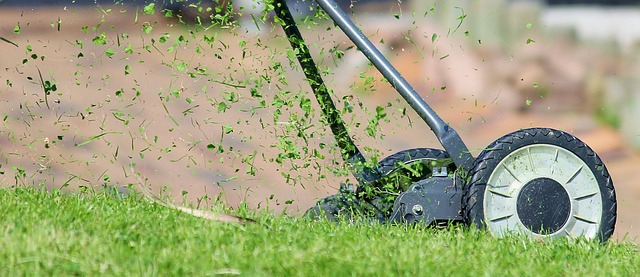Learn more about lawn mowing
Maintaining a beautiful lawn requires more than just pushing a mower around your yard. Proper lawn mowing techniques are essential for promoting healthy grass growth, preventing disease, and achieving that perfect, manicured appearance. Whether you're a new homeowner or looking to improve your existing lawn care routine, understanding the fundamentals of effective mowing can transform your outdoor space.

A well-maintained lawn enhances your property’s appearance and creates an inviting outdoor space for relaxation and activities. Proper mowing is perhaps the most fundamental aspect of lawn care, yet many homeowners don’t realize that how and when you mow can significantly impact your lawn’s overall health and appearance. From cutting height and frequency to seasonal adjustments and equipment maintenance, mastering the art of lawn mowing requires understanding several key principles and techniques.
Discover effective mowing techniques for a healthier lawn
The way you mow your lawn can either promote or hinder its health. One of the most crucial mowing techniques is following the one-third rule: never remove more than one-third of the grass blade length in a single mowing session. Cutting too much at once stresses the grass, making it more susceptible to disease and drought damage.
Mowing pattern is another important consideration. Alternating your mowing direction each time prevents soil compaction and grass leaning in one direction. Try mowing in north-south rows one week, then east-west the next. This promotes upright growth and reduces wear patterns in your lawn.
Sharp mower blades are essential for clean cuts. Dull blades tear grass rather than cutting it cleanly, creating jagged edges that turn brown and provide entry points for disease. Plan to sharpen your mower blades at least twice during the growing season—once in spring and again mid-summer—for optimal performance.
Understand lawn care basics beyond just mowing
Effective lawn care involves understanding how mowing integrates with other maintenance practices. Proper watering complements good mowing habits—deep, infrequent watering encourages deeper root growth, making grass more drought-resistant and requiring less frequent mowing during dry periods.
Soil health directly impacts how your grass responds to mowing. Conducting a soil test can reveal deficiencies that might be affecting growth patterns. Most lawns thrive in soil with a pH between 6.0 and 7.0. Adjusting your soil composition based on test results can lead to stronger grass that withstands the stress of regular mowing.
Fertilization timing also affects mowing frequency. Apply fertilizer when the grass is actively growing, typically spring and fall for cool-season grasses or late spring through summer for warm-season varieties. This provides nutrients when the grass can best utilize them and helps maintain steady, manageable growth rates that don’t require excessive mowing.
Explore seasonal mowing tips for year-round lawn care
Spring mowing requires special attention as grass awakens from dormancy. Begin with a slightly lower cut to remove winter debris and stimulate growth, gradually raising the height as temperatures increase. This transition period is also ideal for overseeding bare patches before summer heat arrives.
Summer brings challenges of heat stress and potential drought. Raise your mowing height during hot months to provide shade for grass roots and soil. Taller grass develops deeper roots that can access moisture further below the surface. Consider leaving grass clippings on the lawn during summer as they return valuable moisture and nutrients to the soil.
Fall mowing practices prepare your lawn for winter. Gradually lower the cutting height as temperatures cool, but avoid cutting too short. A moderate height of about 2-2.5 inches for the final mow helps prevent snow mold in colder regions while still allowing adequate sunlight to reach the crown of the grass plants.
Improve your lawn’s health through proper mowing height
Different grass types thrive at different mowing heights. Cool-season grasses like Kentucky bluegrass and fescues generally perform best when maintained at 2.5-3.5 inches, while warm-season varieties like Bermuda or Zoysia prefer shorter heights of 1-2 inches. Knowing your grass type is essential for determining optimal cutting height.
Adjusting mowing height seasonally provides significant benefits. In spring and fall, when growing conditions are ideal, you might maintain a slightly lower height to encourage density. During summer heat stress, raising the height by half an inch to an inch provides crucial shade for the soil and root system.
The relationship between mowing height and root development is often overlooked. Higher mowing heights promote deeper root systems that can better access water and nutrients. This creates a more resilient lawn that requires less irrigation and fertilizer, making your maintenance routine more sustainable and environmentally friendly.
Master your mowing skills with proper equipment maintenance
Regular mower maintenance ensures clean cuts and efficient operation. Beyond blade sharpening, check and change the oil according to manufacturer recommendations, typically every 25-50 hours of operation. Clean or replace air filters regularly, as clogged filters reduce engine performance and increase fuel consumption.
Proper storage extends equipment life and maintains cutting quality. Store your mower in a dry location, and consider using fuel stabilizer if it will sit unused for extended periods. For gas-powered mowers, either run the tank empty before winter storage or keep it full with stabilized fuel to prevent condensation and carburetor issues.
Understanding your mower’s features maximizes efficiency. Many modern mowers offer mulching capabilities that finely chop clippings and return them to the lawn as natural fertilizer. When properly mulched, these clippings decompose quickly, providing up to 25% of your lawn’s nitrogen needs while reducing waste.
Mastering lawn mowing techniques is an ongoing process that changes with the seasons and as your lawn matures. By understanding the principles behind proper mowing and integrating them with comprehensive lawn care practices, you can develop a beautiful, resilient lawn that enhances your outdoor living space. Remember that consistency is key—regular mowing at the right height, with well-maintained equipment, forms the foundation of successful lawn care throughout the year.


